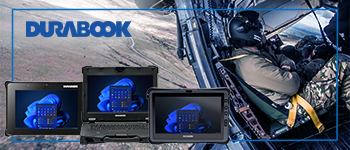Lines of communication
Tim Williams reveals how the PACE method delivers assured communications in the battlefield
For any operation, the implementation of Command and Control (C2) communications is a complex and essential activity that requires in depth planning to overcome many complexities. The task is further exacerbated by the deployment of forces in a region where the quality of network infrastructure is low. This was the case during the Eighties and early Nineties when technology was not as advanced and resourcing a comprehensive PACE (Primary, Alternate, Contingency, Emergency) plan was almost completely unachievable. Contingency communications were restricted to local infrastructure, such as a public telephone box (not always readily available) and there was a complete lack of emergency communications.
While the digital revolution has resulted in more complex, data-driven communication systems, teams are still hindered by an over reliance on Primary and Alternate plans. To deliver assured communications in operational theatres, steps must be taken to improve the quality of Contingency and Emergency systems for those on the battlefield.
Nowadays, digitisation has brought with it communication systems with increased resilience. But it has also brought increased complexity. Prior to the digital revolution, systems were quite basic, analogue and less focused on data. Their utility was dependent on the skill set of radio operators and technicians to work and maintain their equipment. This meant an increased probability of setting up successful communication links, and when voice was not achievable the operators could switch to Morse Code – which was considered a skill set in its own right. In the digital age, it is unequivocal: the systems either work or they do not. Primary, Analogue and Alternate systems were more resilient, therefore there was less reliance on Contingency and Emergency options. Additionally, mobile phones didn’t exist so there was never an easy fall-back option. This meant heavy reliance on the information passed during a verbal orders process and an astute interpretation by the operator/soldiers. Success was ultimately achieved by following the plan and adapting effectively by using previous knowledge and experience.
During my military career, I was deployed to Bosnia in the early-Nineties as part of the UN Protection Force. We were based in Sarajevo, where there was a need for area-wide very high-frequency (VHF) coverage to support the varying types of operations. To achieve this, it was estimated that three rebroadcast sites would need to be established. Generally, the higher up the rebroadcast station is, the better coverage it will provide. These types of installations typically also require both electrical power and physical security. Sarajevo is surrounded by mountains and many of them had friendly forces holding positions on top of them. We knew these forces could provide the necessary security and options for power, but we needed to confirm which of the available sites would provide the coverage required. Requiring us to visit and test from those locations. However, setting off and arriving at a military post (especially if it is a site held by a different nation) is an arduous process requiring permissions, which can take days to receive.
Once the approvals were in place, our team set off to install the range extension equipment. This left us isolated and at risk almost immediately as we were out of communications range of the HQ within minutes. To get to the first site required a four-hour drive, navigating crater-filled roads, indiscriminate small arms fire and continuous checkpoints. If we had failed to reach the summit site within two hours from a physical check in site a decision would be made whether to send out a search party. To put this in perspective, there is a ‘golden hour’ rule that is applied to the first hour after a serious injury has occurred: 60 minutes or less when prompt effective emergency care can mean a difference between surviving or not. If something happened to us on the route up to the top, it could have been three hours before anybody found us.
Among the many things learned on this deployment, what became evidently clear was the impact of a terrain on primary communications. Consequently, after successfully installing one communication link back to HQ, upon entering into the next valley all communications ceased. This was the case in each valley, until entering Sarajevo again where the coverage improved. The process then began again as we headed to the second mountain site to install further range extension equipment. As can happen, technical faults can easily affect communications equipment, and maintenance requires regular trips between communication sites, which could be two to three times a week. This would be mitigated by the availability of an Alternate system.
The Alternate system is generally a high-frequency (HF) radio. This is likely to be based on a complex and High Grade encrypted system, which is part of a wider Combat Net Radio procurement programme. Again, these type of radios usually require highly competent operators in order to deliver effective communications. With most HF systems it is relatively simple to establish a link over 30 to 40 miles by using whip-type antennas or simple vertical wires. It is much more challenging to achieve 70 to 300 miles. Many systems today have the ability to electronically lengthen antennas when a frequency is changed in order to minimise the effort required, while maximising the probability of success. This is further supported by automatic link establishment where the system chooses the best frequency to operate from. The shift from very high-frequency (VHF)/Ultra-high frequency (UHF) to a HF solution will reduce the bandwidth and in turn reduce the level of data services that can be supported, which can include reduction or total loss of situational awareness position feeds.
The lack of suitable contingency systems in Bosnia compounded by the other challenges we faced during the tour demonstrate the difficulties and risk with setting up communications infrastructure in a war-torn country. While every operational theatre presents its own unique challenges, from my experience, each suffered the same lack of assurance and minimal solutions to fall back on once the Primary and Alternate systems failed.
Disappointingly, while today’s Combat Net Radio systems are more complex, digitised, have options for a high throughput of data and provide situational awareness, they still often lack the versatility to deliver vital capability across the myriad of operational deployments. Even with the introduction of tactical satellite systems, which enabled beyond line of sight reach and increased the probability of achieving successful communications, the channels are very limited, and this is further compounded by organisations operating in smaller teams, which increases the demand. Therefore, this technology is not available to the majority of military units.
Most of today’s Combat Net Radio systems were designed to support a formation (like a brigade or division) moving in battle. Rather than to support every type of operational scenario and certainly not the large percentage of operations that forces are deployed on today. The threat to security has changed significantly over the last 15 years driving a different approach, but very little has changed in how we communicate in the field. Although there is a need for this type of system to support general war or large scale campaigns, they are not the most common type of deployment. The most common tend to be smaller scale, where units are operating in remote areas without any communications infrastructure. Meaning, in essence, forces deploying on operations do so with suboptimal systems.
The biggest advance in communication technology was the introduction of mobile phones, but this technology has total reliance on fixed infrastructure. The likes of which is not available or cannot be relied upon in many military operational areas. Yet, this is the same technology that is used to mask failure of Primary and Alternate and lack of Contingency and Emergency systems, especially during training.
The difficulty found with the slow progress to improve C2 infrastructure, is the continued reliance on Primary communications. These are usually complex, robust, digitised military communications systems that are routinely expensive, heavy in weight, large in size (vehicle borne – less some manpack solutions) and are delivered as part of a defence organisations’ equipment programme. When fully functional, this system provides operations staff with the tools they need to plan and prosecute the military tasks bestowed upon them. However, they will only provide limited coverage, in some cases covering just tens of miles away from base. This drives a need to install additional infrastructure to enable range extension – which adds further complexity. For example, if you require communications to support the deployment of troops to establish the lay of the land and de-risk future operational tasks in the theatre, you first need to deploy some sort of communications infrastructure. This scenario is based upon an environment where mobile phone networks are not functioning or use of them can create their own inherent security risk. In this case, the troops implementing an infrastructure do so at high risk and do not have supporting communications during the process until a network is established. The question is, if an incident occurs how do you inform anyone?
As it takes many years to develop and bring a new core military Primary and Alternate system into service there will always be the challenge of evolving with the rate of development in technology. This means that it is difficult to develop communication capabilities to counter the new types of threats made possible by the advancement of technology. Change and adjustment of an existing system is expensive and slow. This is further compounded by the fact that many military Primary and Alternate systems are built to last for 15-20 years from the outset. By the time many systems are put into service they are already behind the power curve.
The challenge is to develop Primary and Alternate systems that remain versatile enough to counter the known threats of today and address the unknown threats yet to materialise. It is difficult to see that through today’s approach of development this utopian solution is achievable. Consequently, investment in the Contingency and Emergency areas should be increased. Growing the use of commercial solutions will allow for rapid development of systems, which can use the most current technology and techniques. Although this approach could enhance the chances of achieving successful communication links in adverse conditions, it would require changes in policies, procedures in development and procurement and ultimately funding. However, this is balanced against assuring communications on the battlefield, which will improve the safety and effectiveness of those tasked with defending their nations.
Tim Williams is Business Development Manager working in Satellite Services within the QinetiQ Business Unit Cyber, Information and Training. Having joined QinetiQ in 2014, he had gained his experience in delivering communication services through a 27-year military career.









